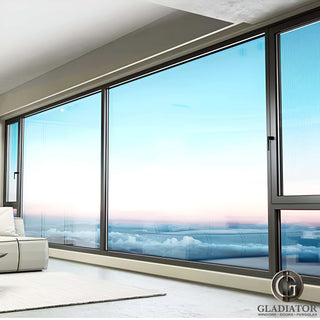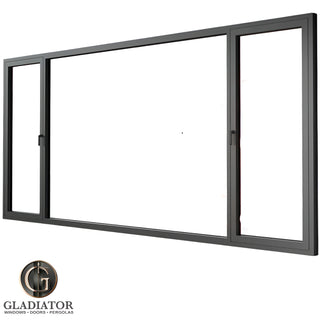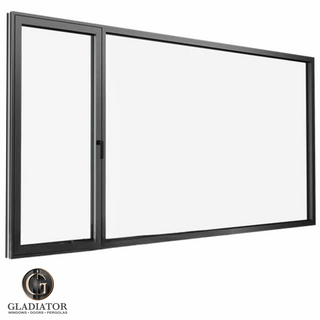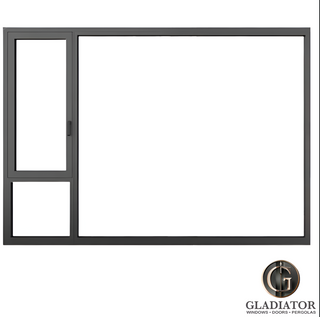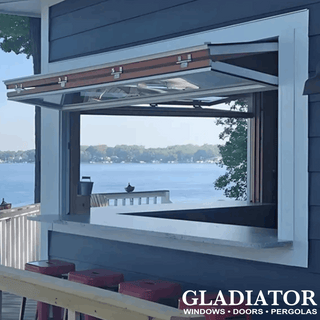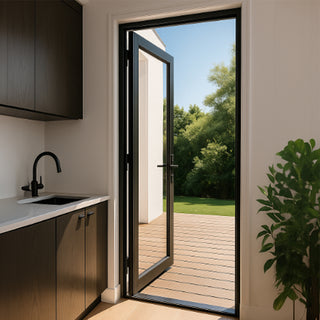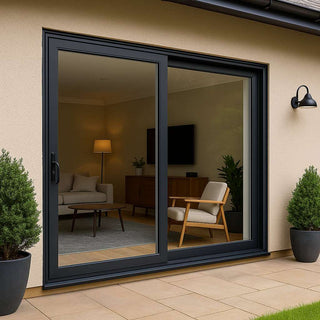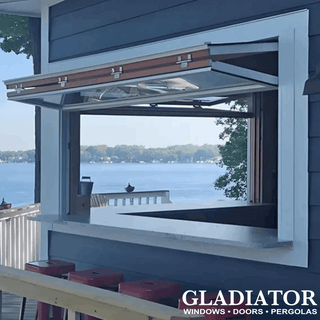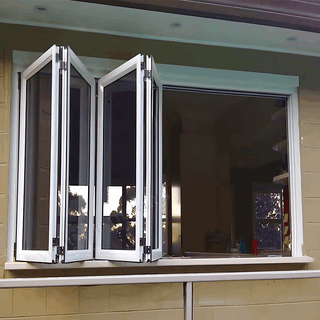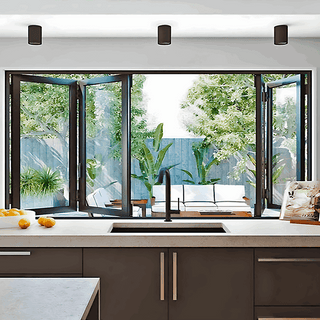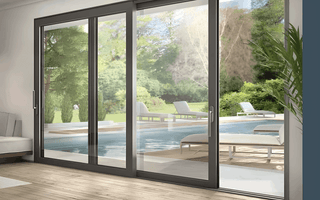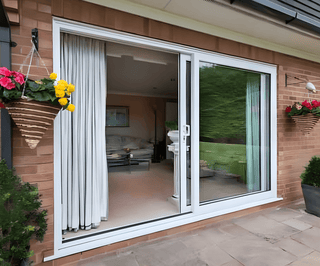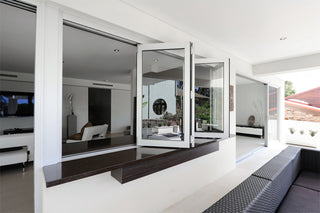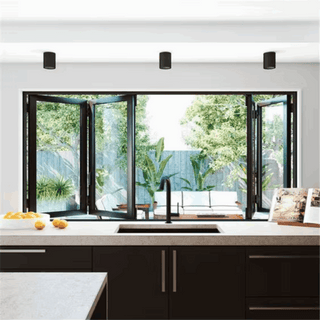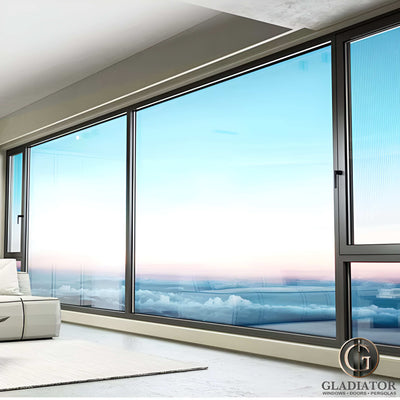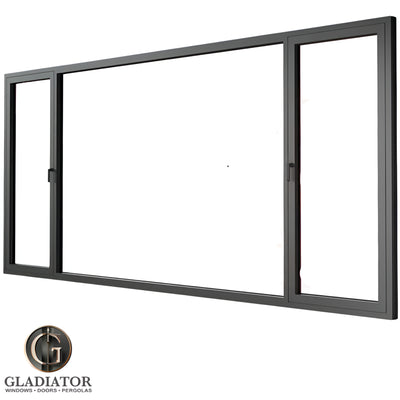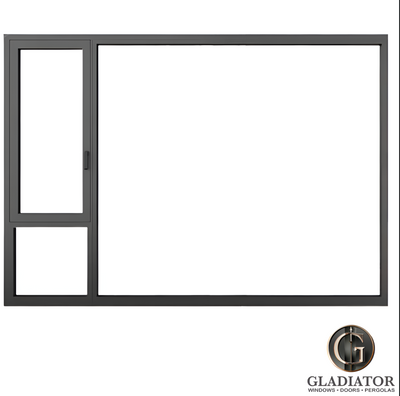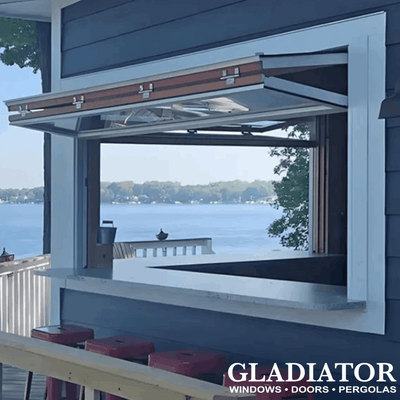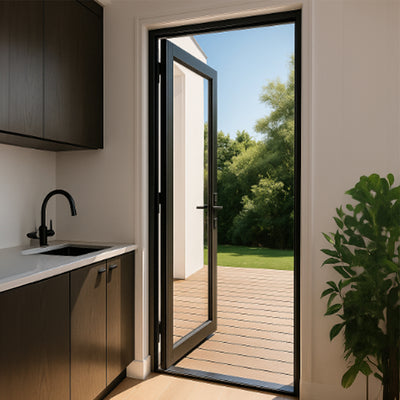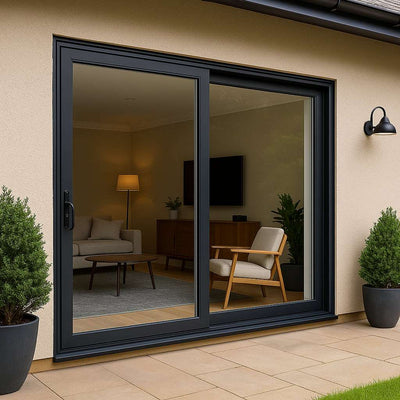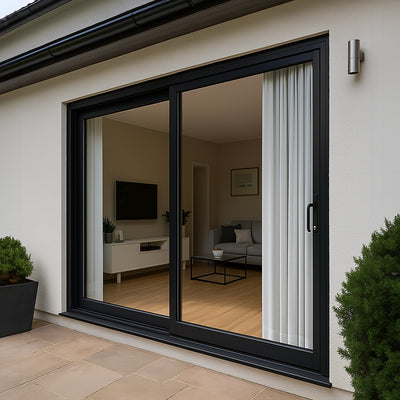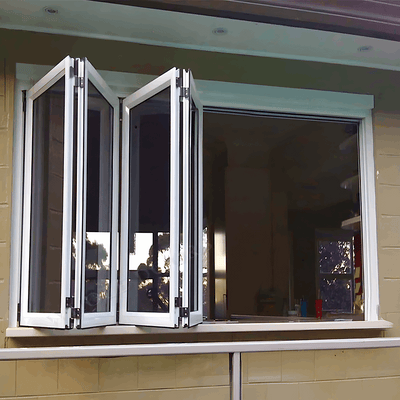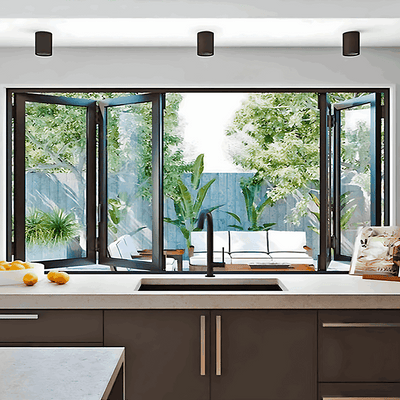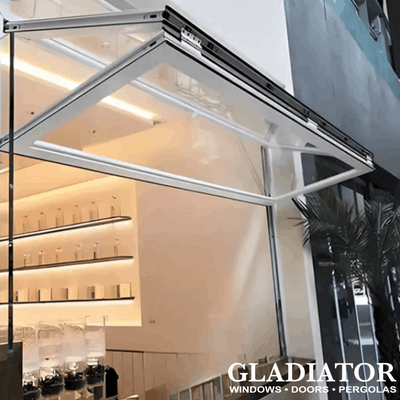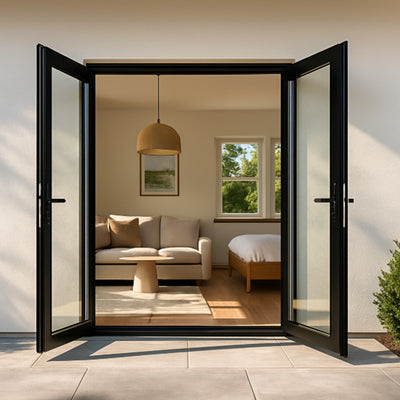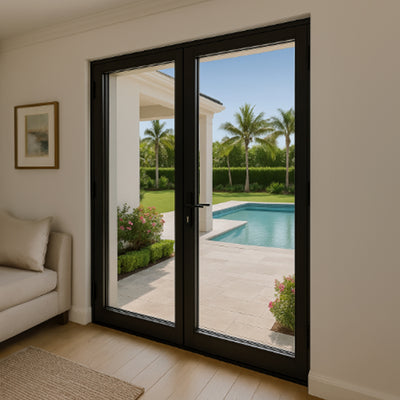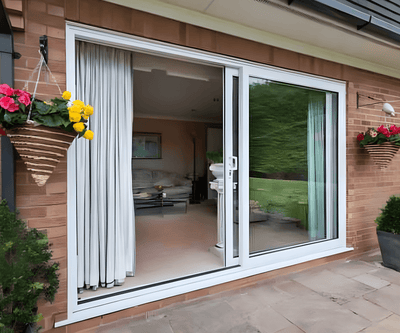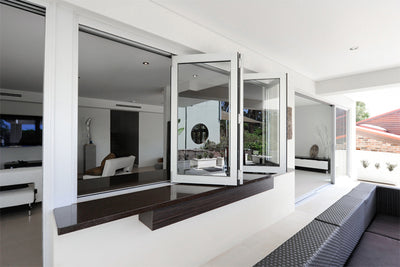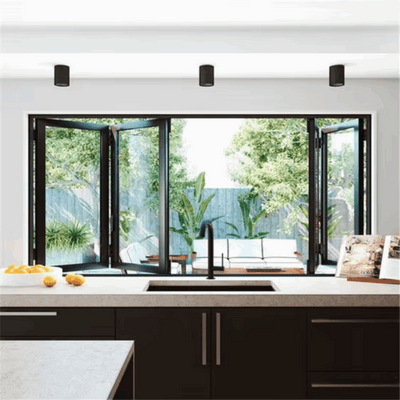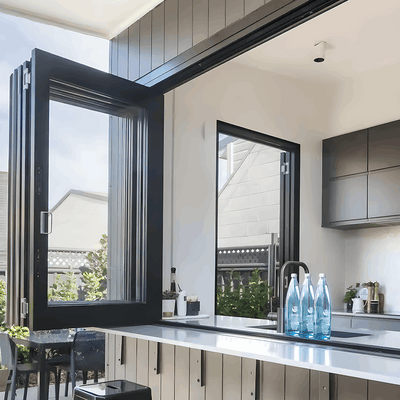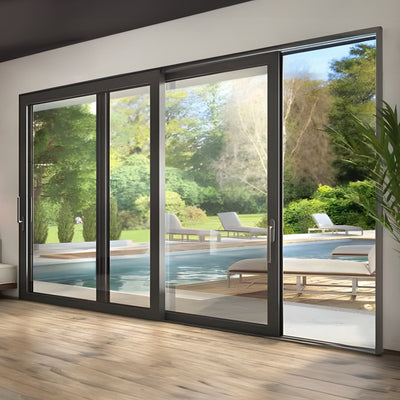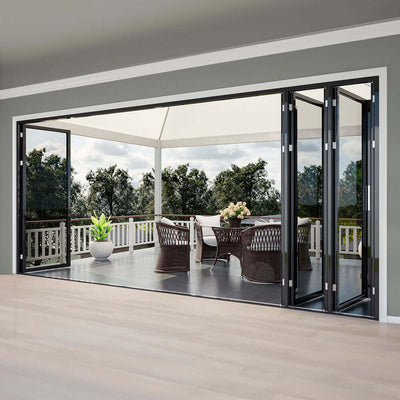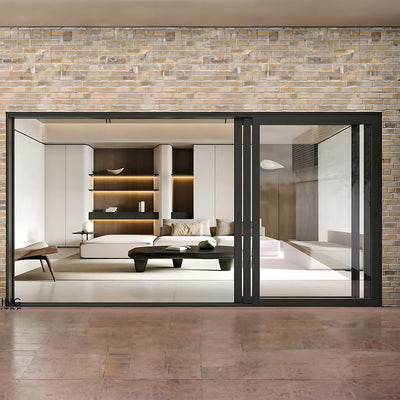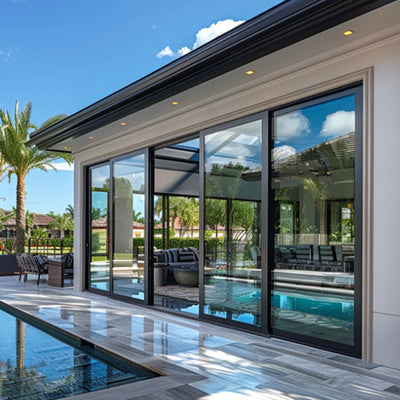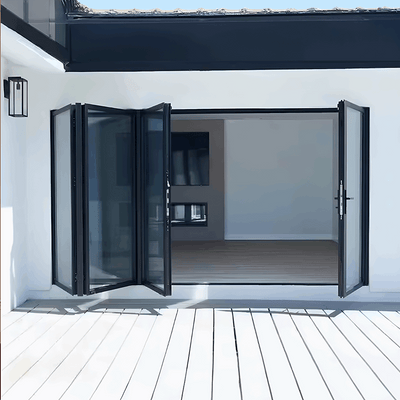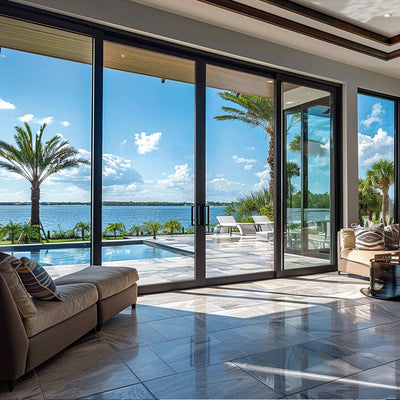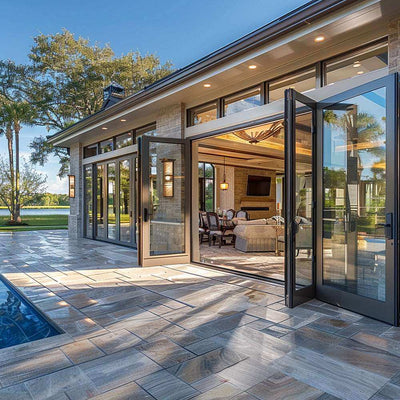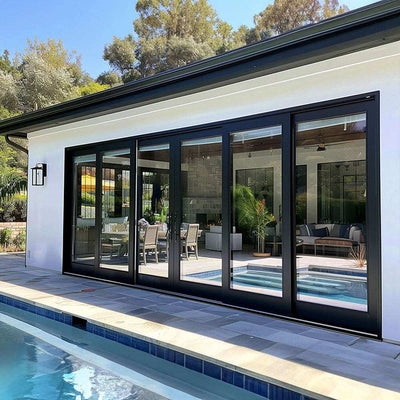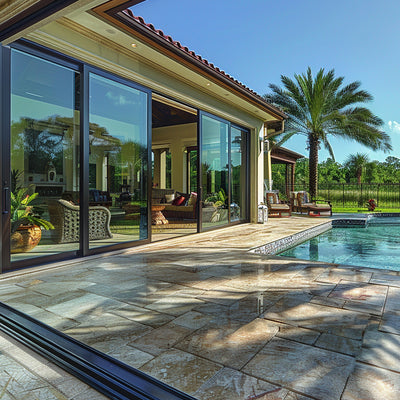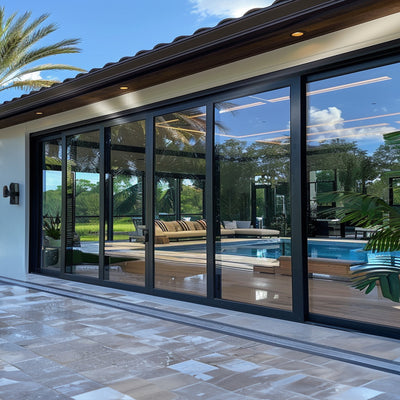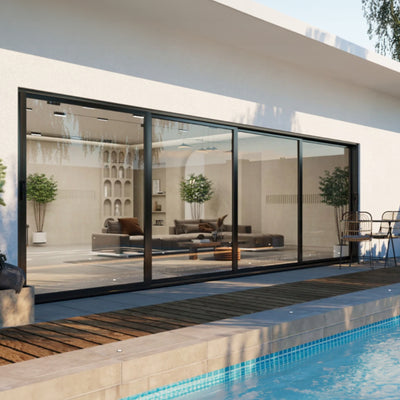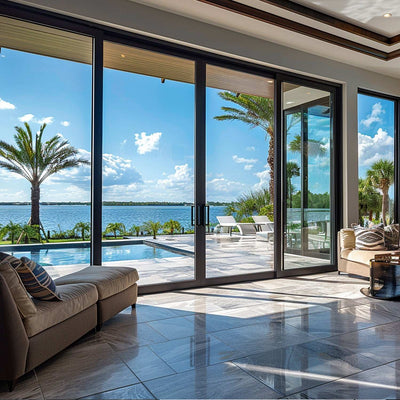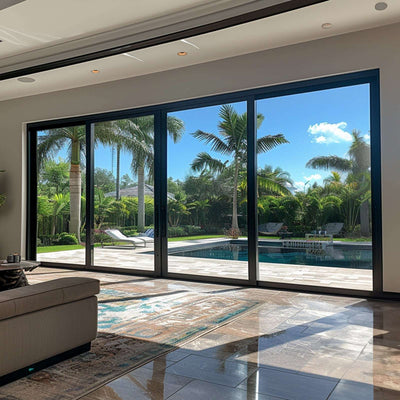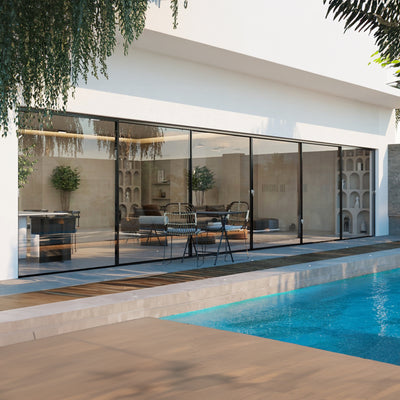The Real Impact Of Winterizing Your Windows
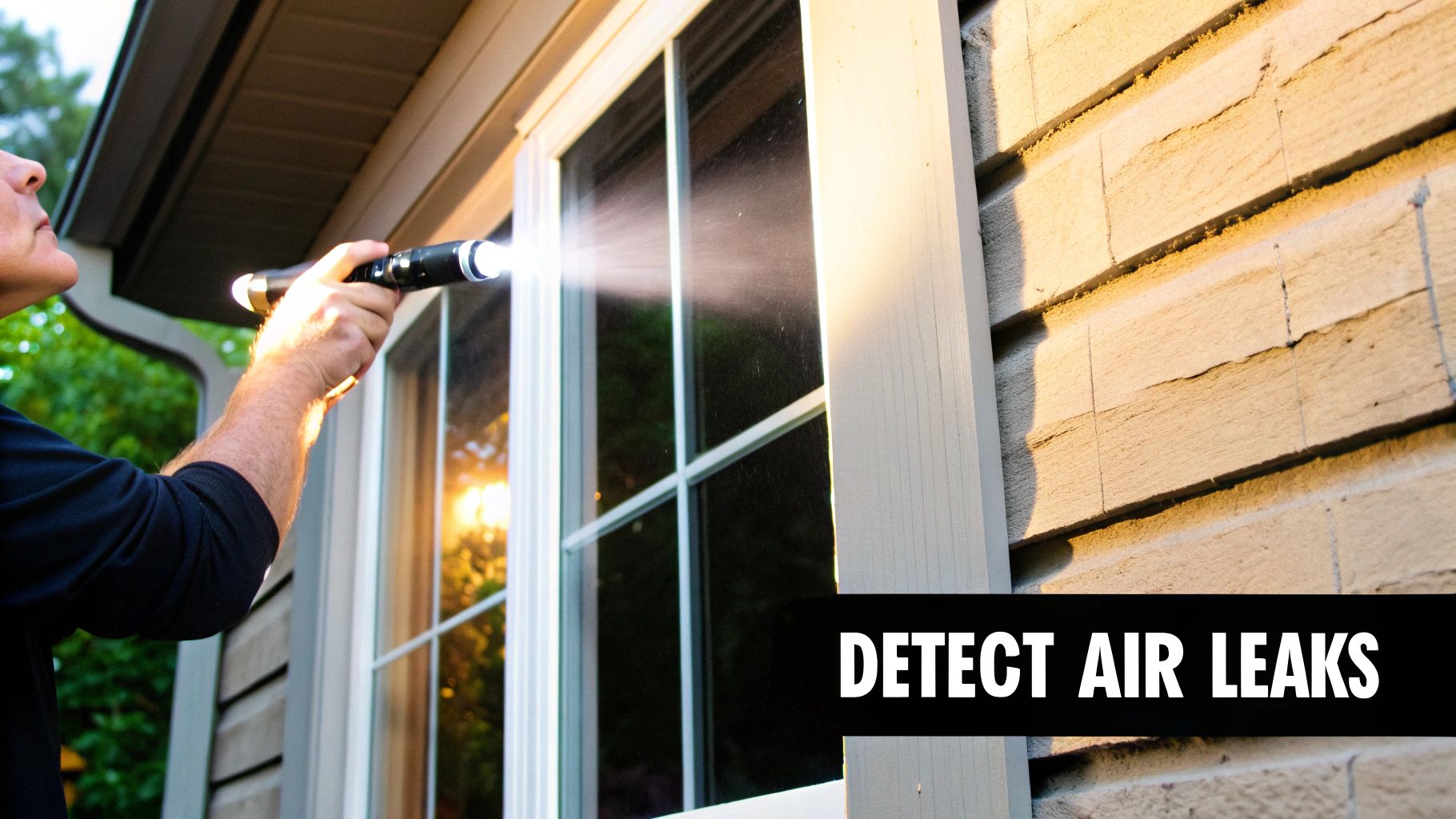
Even small gaps around single-glazed windows can quietly drive up your heating bill. The U.S. Department of Energy warns that up to 25% of heat loss happens through cracks and seams around window frames.
That constant chill forces your furnace to run more often, boosting energy costs and leaving rooms uncomfortably cold until you seal those leaks or upgrade your windows.
Benefits Of Proper Winterization:
- Immediate Savings: Notice lower energy bills as soon as you seal leaks
- Enhanced Comfort: Eliminate cold drafts and uneven room temperatures
- Higher Home Value: Energy-efficient upgrades appeal to prospective buyers
- Environmental Benefit: Reduced heat loss means fewer emissions
Financial Impact Over Time
Here’s how different window options affect annual heating costs:
| Window Type | Annual Heating Cost | Savings (%) | Yearly Savings |
|---|---|---|---|
| Single-Glazed (Unsealed) | $400 | 0% | – |
| Double/Triple Glazing | $200 | 50% | $200 |
Switching to double or triple glazing can cut window-related heat loss in half, delivering significant reductions on each winter energy bill and compounding savings over time.
Long-Term Economics And Market Trends
Properly sealed, insulated windows do more than lower your thermostat. They enhance your home’s value and cut operating costs over the long term. The global market for insulating glass windows rose from £10,139.36 million in 2021 to a projected £13,662.24 million by 2026, driven by stricter efficiency standards and sustainability goals.
Sealing leaks and choosing advanced glazing pays for itself through lower utility bills and positions your property as a modern, energy-smart investment. For more details, check out GreenMatch’s window market report.
You might also like: How to Master Window Draft Fixes
Finding Your Window Weak Points: A Practical Guide
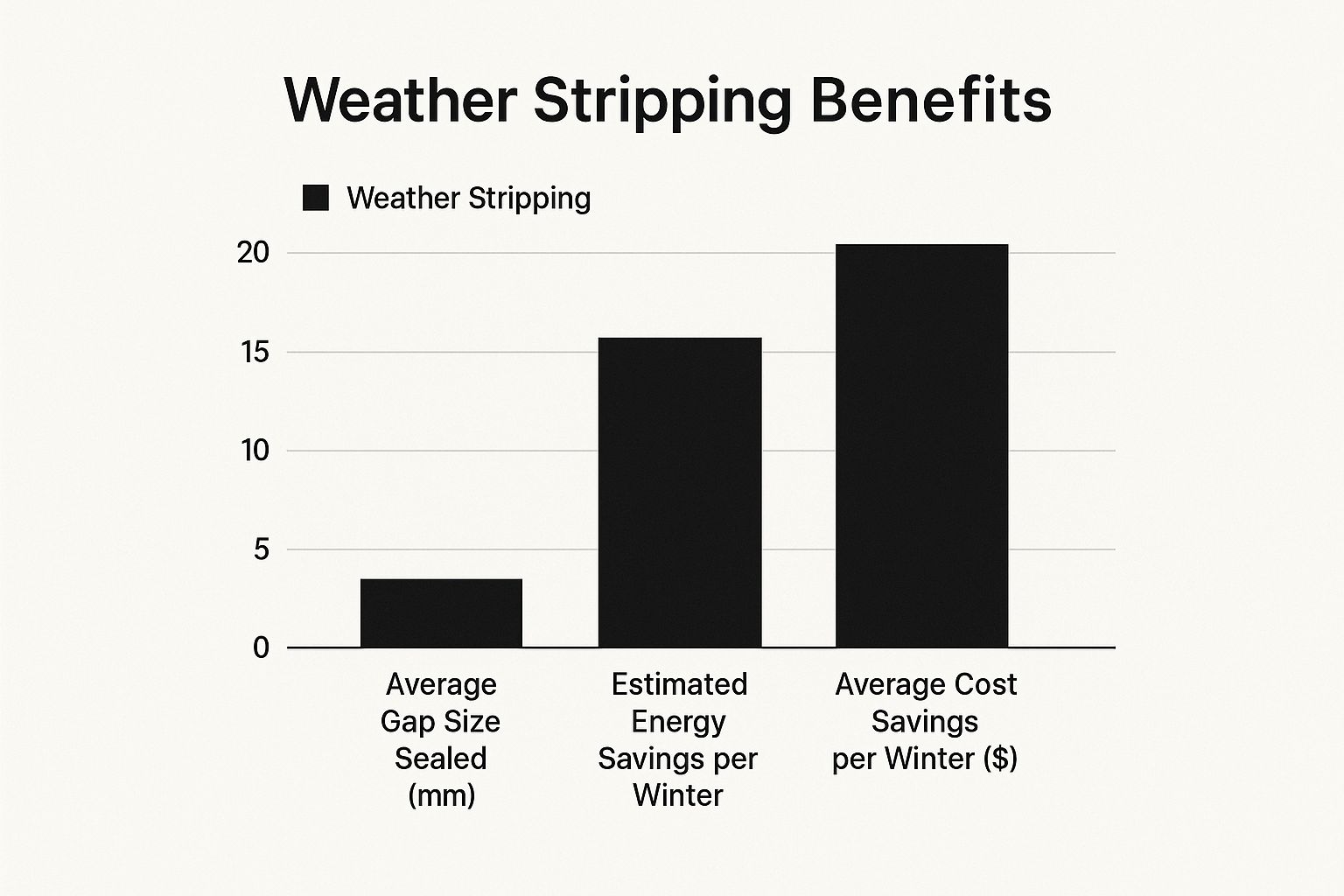
This data chart shows a bar chart comparing detection accuracy across four draft-finding methods. It highlights which techniques catch the most heat loss so you can prioritize the most effective tests.
Before you winterize windows, pinpoint every source of heat loss. Even a tiny crack in the frame can act like a mini chimney, pulling warm air out. Combining simple and advanced tests ensures hidden leaks aren’t missed and lets you tackle the biggest energy wasters first.
Common Detection Techniques
Energy auditors often use a mix of methods to spot drafts:
- Visual Inspection: Use a flashlight or mirror to find gaps, cracked seals, or warped frames.
- Candle Test: Move a lit candle around edges—any flicker signals air movement.
- Thermal Imaging: Deploy an infrared camera to detect temperature differentials behind the glass and frame.
- Digital Air Flow Meter: Employ a Digital Air Flow Meter or blower door test to quantify leaks in cubic feet per minute (CFM).
Window Draft Detection Methods
Below is a comparison of different techniques for identifying window air leaks and their effectiveness:
Window Draft Detection Methods
Comparison of different techniques for identifying window air leaks and their effectiveness
| Detection Method | Equipment Needed | Accuracy | Best For | Limitations |
|---|---|---|---|---|
| Visual Inspection | Flashlight, mirror | 45% | Quick checks on obvious damage | Misses hidden or small leaks |
| Candle Test | Candle or incense stick | 60% | Identifying moderate drafts | Subjective, unsafe near curtains |
| Thermal Imaging | Infrared camera | 92% | Pinpointing hidden temperature gaps | Higher cost, learning curve |
| Digital Air Flow Meter | Blower door or meter | 85% | Quantifying total air infiltration | Requires setup, more time |
This table reveals that Thermal Imaging and Digital Air Flow Meter tests catch significantly more leaks than basic inspections. Choosing the right method depends on your budget, time, and the level of precision you need.
Creating Your Winterization Plan
Once you map leaks, categorize them by severity and access:
- High Priority: Wide cracks at the sash or loose frame corners
- Medium Priority: Deteriorated weatherstripping and small frame gaps
- Low Priority: Cosmetic sealant cracks behind trim
Tackling major leaks first delivers the greatest energy savings from caulking and insulation.
You might be interested in: How to Master Window Draft Fixes for detailed sealing techniques.
Fast, Affordable Fixes Anyone Can Master
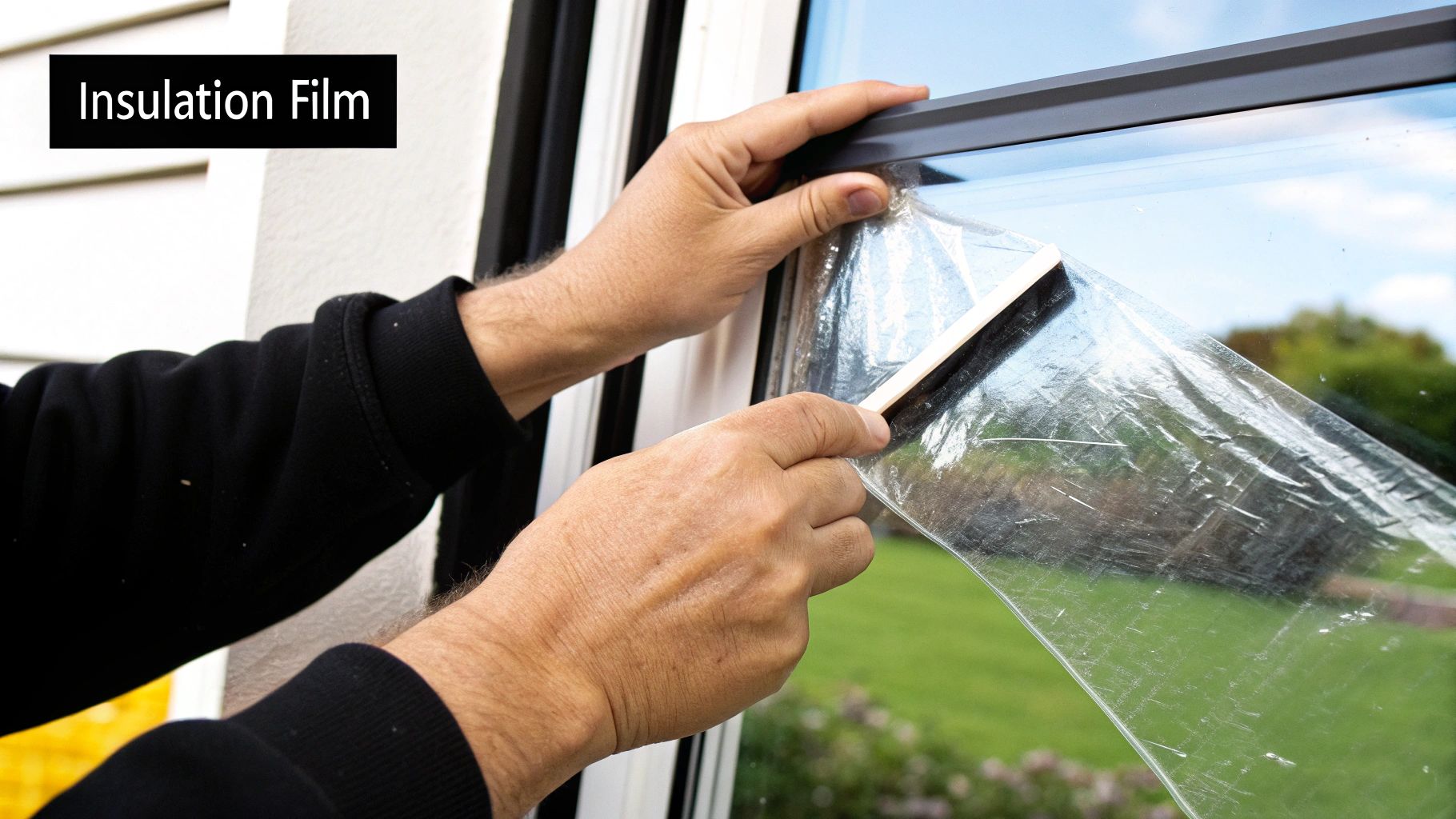
Properly winterizing windows doesn’t have to cost a fortune or require a professional. Even if you rent or have a tight budget, you can tackle chilly drafts with just a few tools and under $50 in materials. In this section, you’ll find three practical DIY methods, from gap sealing to adding an insulating layer.
Weather Stripping Magic
First, look for worn seals around window sashes—they often let in the most cold air. Installing adhesive foam or V-strip weather stripping can close tiny gaps in minutes. Your rooms will feel warmer, and your heater won’t have to work as hard.
- Clean frame and sash with rubbing alcohol
- Measure and cut the weather stripping
- Press firmly for an airtight fit
- Check for leaks using a candle or incense stick
This easy step makes caulking more effective.
Strategic Caulking Techniques
Sealing cracks around window frames locks in heat and keeps moisture at bay. Buying silicone caulk and a sturdy caulk gun ensures a long-lasting seal. A good application can last 3–5 years.
- Remove old caulk with a putty knife
- Apply a steady bead into gaps and seams
- Smooth with a damp finger or caulk tool
- Let the caulk cure for at least 24 hours
The U.S. Environmental Protection Agency says adding insulation to windows can cut greenhouse gas emissions by the same amount as taking a car off the road for six months. Homeowners also save 10%–20% on heating bills. That means your DIY work pays off in both cost and environmental impact. Discover more about winterizing windows here.
Innovative Window Insulation Films
Insulation kits use clear film and double-sided tape to trap a layer of air. At under $15 per window and about 20 minutes of work, these kits shine in older homes where replacing glass isn’t an option.
- Measure window and cut the film
- Apply tape around the frame interior
- Stretch film over the tape and heat-shrink with a hair dryer
- Trim any excess film
Using insulation film along with weather stripping and caulking gives the best results.
DIY Winterization Method Comparison
| Method | Estimated Cost | Tools Needed | Time Required | Durability | Effectiveness |
|---|---|---|---|---|---|
| Weather Stripping | $5–$20 | Scissors, cleaner | 15–30 mins | 1–3 years | Medium |
| Caulking | $8–$15 | Caulk gun, knife | 30–60 mins | 3–5 years | High |
| Insulation Film Kits | $10–$15 | Hair dryer, tape | 20–30 mins | 1 season | Medium-High |
Combining these three fixes delivers the most comfort without replacing windows. Check out our guide on How to Master Window Draft Fixes for detailed steps and expert tips.
Next-Level Winterization Strategies That Deliver
Once basic sealing and insulation films are in place, homeowners often look for more robust window upgrades. Engineered layers work like a down jacket under a wool coat, trapping heat more effectively. Many report cutting winter heating costs by up to 50% after adding interior storm systems.
Interior Storm Window Systems
Interior storm windows install a second pane inside your existing sash, creating a buffer of still air that slows heat flow.
- Heat Loss Reduction: Cuts transfer by 30–50%
- Installation: Magnetic or track-mounted frames, DIY-friendly
- Best For: Historic or single-pane windows needing protection
They also dampen outside noise and reduce condensation on cold mornings, providing a strong base for further upgrades.
Specialized Thermal Window Treatments
Think of these treatments as custom-fitted blankets for your glass.
- Cellular Shades: Boost R-value by 1.5–2.5 units
- Thermal Drapes: Cut heat loss by 15% when fully drawn
- Integrated Blinds in Double-Panes: Combine light control with insulation
Beyond energy savings, you’ll get better privacy and room darkening—perfect for bedrooms and media spaces.
Advanced Insulation Approaches
For projects that dive deep into framing and glazing science, these options deliver maximum gains.
- Spray Foam Jamb Insulation: Seals gaps with an airtight barrier
- Vacuum Insulated Glazing (VIG): Provides R-3.0–4.5 in a slim profile
- Structural Insulated Panels Around Windows: Turns entire walls into a thermal shield
These methods often require professional installation but offer the highest long-term ROI on energy bills.
Window Insulation Options Comparison
To help you compare key methods, the table below outlines costs, performance gains, and installation factors.
Window Insulation Options Comparison
Analysis of different window insulation methods, their costs, R-value improvements, and best applications
| Insulation Method | Cost Range | R-Value Increase | Installation Difficulty | Lifespan | Visual Impact |
|---|---|---|---|---|---|
| Interior Storm Window Systems | $20–$60 | 1.0–2.0 | Medium | 10–20 years | Low |
| Cellular Shades | $50–$200 | 1.5–2.5 | Low | 5–7 years | Medium |
| Spray Foam Jamb Insulation | $30–$70 | 2.0–3.0 | High | 20+ years | Hidden |
| Vacuum Insulated Glazing | $200–$400 | 3.0–4.5 | High | 20+ years | Minimal (thin) |
This comparison highlights the balance between upfront cost, efficiency gains, and appearance. Simpler options suit DIY projects, while advanced glazing and framing deliver top efficiency.
Explore our guide on How to master advanced window solutions to discover the best mix for your climate zone and window type.
When to Upgrade: Smart Window Replacement Decisions
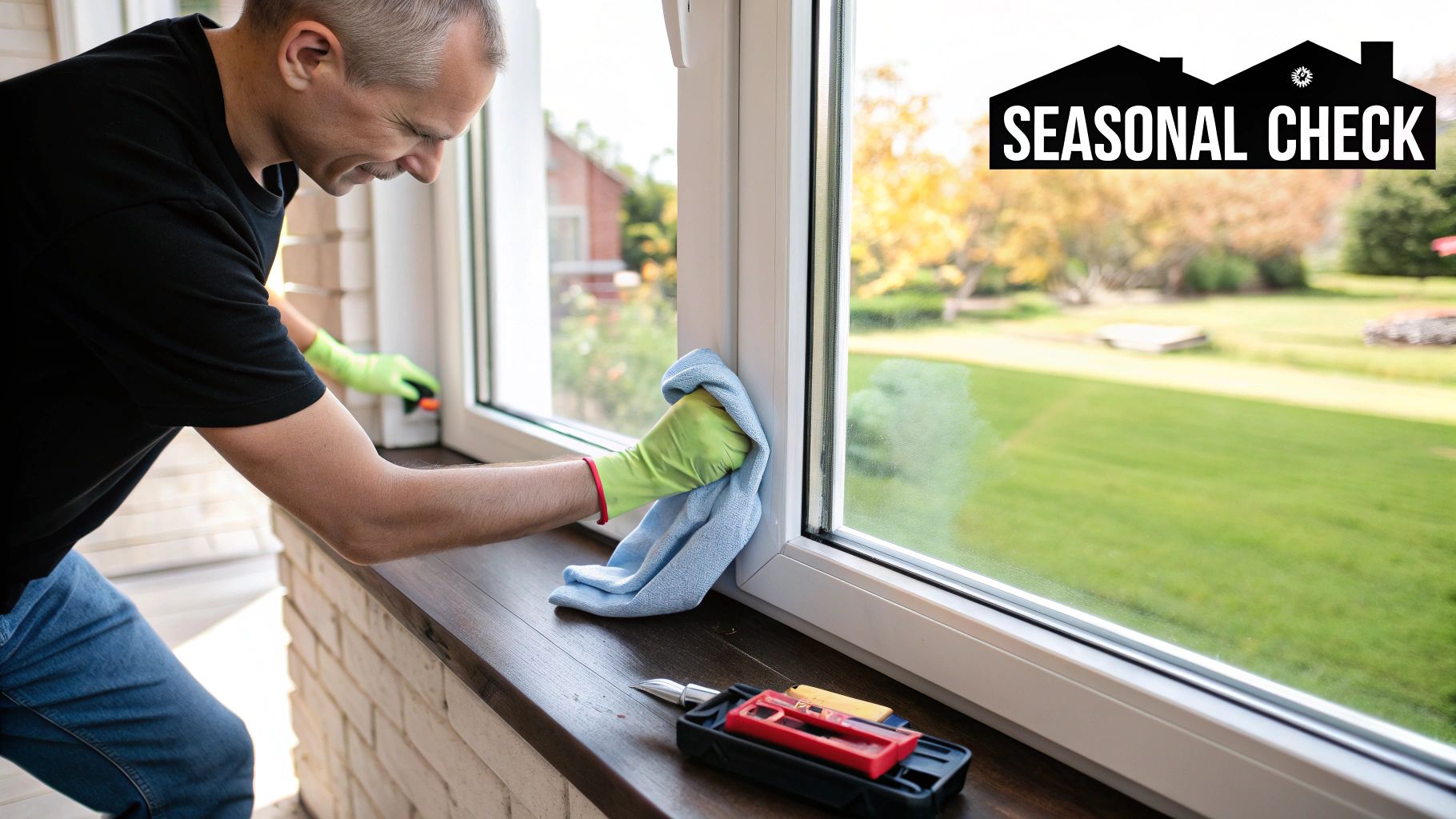
Sometimes a simple draft stopper or window film only goes so far. When maintenance costs exceed 50% of replacement value or performance still falls short, it’s time to weigh repair against new windows. Making the right call now can secure comfort and savings for decades.
Decoding Window Energy Ratings
Before you shop, learn to read the key numbers that drive efficiency:
- U-Factor: Measures heat transfer; lower values mean better insulation
- Solar Heat Gain Coefficient (SHGC): The fraction of solar energy that passes through the glass
- Visible Transmittance (VT): The amount of daylight that filters in
- Air Leakage (AL): Rate of air infiltration around the frame
These numbers can turn two similar-looking windows into very different performers. Comparing ratings helps you pick models that deliver the biggest winter advantage.
Evaluating Real-World Performance
Different glazing and frame materials make a big difference:
| Technology | U-Factor | Typical Lifespan | Price Range | Energy Savings |
|---|---|---|---|---|
| Single-Glazed | 1.0–1.2 | 20–30 years | $50–$150 | 0% |
| Double-Glazed | 0.25–0.45 | 30–40 years | $200–$600 | 20–50% |
| Triple-Glazed | 0.15–0.30 | 40–50 years | $400–$1,000 | 40–70% |
For example, moving from single to triple glazing can cut heat loss by up to 70%, drastically lowering winter bills and boosting comfort.
Installation Considerations That Impact Efficiency
Even top-rated windows can underperform if they aren’t fitted properly.
- Professional Installation: Ensures airtight seals, correct flashing, and warranty coverage
- DIY Fitment: Lower labor cost but higher risk of leaks, frame warping, and voided warranties
Improper installation can add 10–15% to heat loss, offsetting the gains of high-end products.
Incentives And Rebates To Lower Costs
Upgrading now could unlock tax credits and rebates that shave up to 30% off project costs:
- Federal Energy Tax Credit (up to $600)
- State and local utility rebates
- Manufacturer discounts and seasonal promotions
Global demand for energy-efficient windows reached $15.19 billion in 2023 and is set to grow at a 7.7% CAGR, hitting $25.46 billion by 2030. This trend underlines why winterizing windows makes financial sense. Read the full research on energy-efficient windows market
Main Takeaways:
- Opt for replacement when repair costs exceed 50% of a new window’s price
- Compare U-Factor, SHGC, VT, and AL to find the best match
- Factor in installation quality and available incentives
You might be interested in: How to Master Window Draft Fixes
Protecting Your Investment: Seasonal Maintenance That Works
After finishing a how to winterize windows project, even small gaps or worn seals can cut efficiency by 15% over a season. Consistent checkups protect your winterization work and lower energy costs.
Identifying Early Warning Signs
A quick 15-minute round of visual inspections at the start of each season can spot issues before they grow. Look for:
- Cracked caulk or peeling weatherstripping
- Warped frames and loose glazing beads
- Discoloration or mildew around the edges
These simple checks can prevent up to 90% of heat loss problems.
Addressing Condensation Issues Before Damage
Excess moisture not only fogs glass but can rot wood and weaken seals. To keep windows dry:
- Wipe down inner sills weekly to stop mold
- Boost airflow in kitchens and bathrooms
- Place moisture-absorbing packs or use a dehumidifier
This routine preserves clear views and strong seals for years.
Quick Repairs That Extend Winterization
You don’t need specialty tools for these efficiency wins. Try:
- Sealing small frame cracks with silicone caulk
- Replacing adhesive foam weatherstripping for a tighter fit
- Tightening loose screws on sash and hinge hardware
Most fixes take under an hour and can add years to your windows’ lifespan.
Maintenance Task Comparison
| Task | Frequency | Tools Needed | Benefit |
|---|---|---|---|
| Caulk Inspection & Repair | Annually | Caulk gun, silicone caulk | Restores airtight seal |
| Weatherstripping Replacement | Bi-Annually | Scissors, cleaner | Eliminates drafts |
| Condensation Management | Weekly | Cloth, dehumidifier | Prevents mold and rot |
Using Smart Window Monitoring
Modern sensors can make upkeep almost automatic. Consider:
- Temperature & Humidity Sensors that sync with your smart home hub
- Digital Seal Monitors to alert you of pressure changes around frames
- App-Connected Cameras for spotting frost or drafts from anywhere
These devices flag performance dips before they show up on your energy bill.
Protect your investment and ensure lasting performance with Gladiator Window and Doors. Experience custom, thermally rated products backed by the best warranty and lowest prices in the USA.
Ready to upgrade? Check out Gladiator Window and Doors today.

















